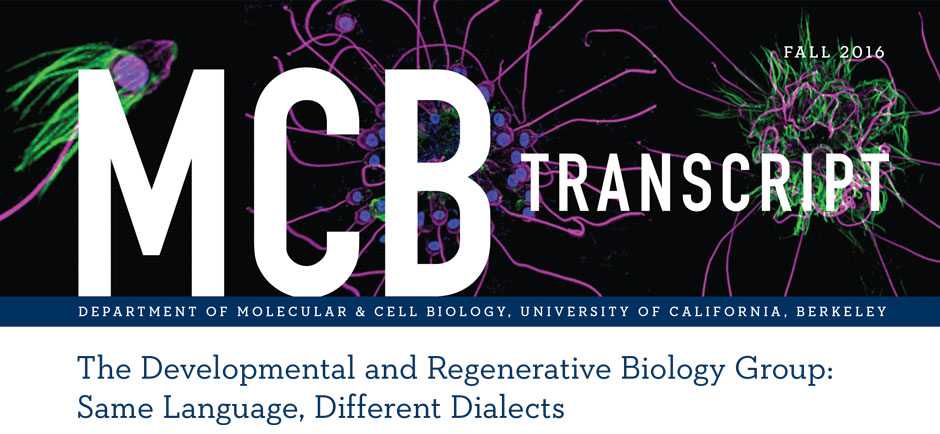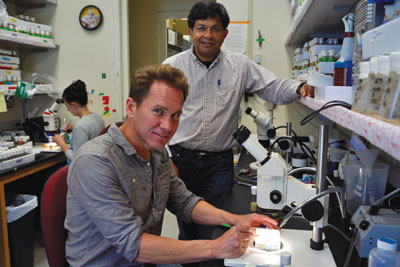
T“wo heads are better than one,” goes the old saying. So it stands to reason that 22 heads are even better than two. It was on this simple idea that the Developmental and Regenerative Biology (DRB) group was formed last year, involving 22 faculty members from 20 labs within the Department of Molecular & Cell Biology (MCB). The group unites researchers interested in fundamental questions about how organisms reproduce, develop from egg to adult, and maintain themselves through renewal and regeneration.
David Bilder and Iswar Hariharan, both professors of Cell and Developmental Biology, head the consortium. Together with Nipam Patel, a professor of Genetics, Genomics, and Development and now a co-chair of MCB, they created DRB to promote synergism and interaction among faculty whose interests have evolved into this common area but were previously separated by divisional and disciplinary boundaries. Berkeley has a history of technological breakthroughs in developmental biology, and the DRB group expects to build on those discoveries.

the Developmental and Regenerative Biology (DRB) Group.
In the past, most traditional developmental biologists studied how an organism develops as an embryo, but that organism continues to age and can sometimes even grow for its entire life span, explains Hariharan. At MCB, scientists are taking an expanded view of developmental biology by exploring how an organism renews itself, maintains a homeostatic state, and responds to injury and aging. “Often we come back to the same set of switches and genes that govern all of these processes — we speak different dialects of the same language,” he says.
“DRB is bringing people in from divisions such as immunology, pathology, and neurology who would not be considered traditional ‘developmental biologists,’” says Bilder. “The intellectual and technical approaches to development are also powerful ways to study intercellular interactions in adult tissues, including homeostasis as well as aging, cancer, and other diseases.”
It turns out that many human diseases — as well as aging, wound healing, and regeneration — involve fundamental mechanisms that are first used during embryonic development. By studying developmental processes and applying this knowledge to adult diseases, scientists are bringing new approaches to addressing these questions. For example, by understanding ways in which growth is regulated during development, they can learn how to promote regeneration after injury in adult humans. Finally, the spectacular successes of stem cell biology rely on lessons learned from decades of research on questions of developmental biology.
“The scientists in this group come from very diverse backgrounds,” says Hariharan. “We see problems in different ways, bring different skill sets, study different organisms. So collectively, we know more.” Bilder adds, “Good science is always dynamic and new collaborations should be formed as interests and opportunities evolve.”
Interested in learning more about the DRB group?
- Visit the DRB website at drb.berkeley.edu.
- Participate in DRB and Stem Cell retreats.
- Attend the annual Genetics, Development, and Evolution Symposium.
For more information, contact David Bilder or Iswar Hariharan.




